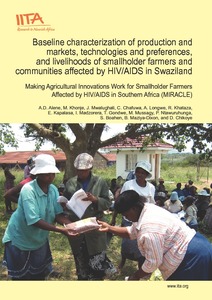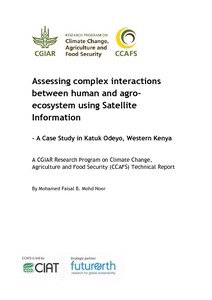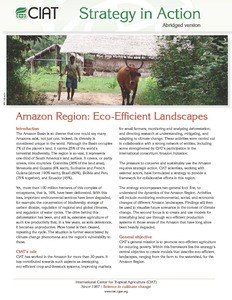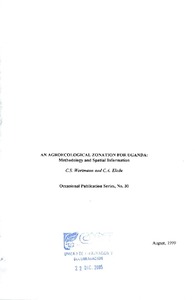agricultura
AGROVOC URI:
Assessment of skimming well performance in Punjab, Pakistan by groundwater simulation modelling
Assisting community management of groundwater: irrigator attitudes in two watersheds in Rajasthan and Gujarat, India
The absence of either state regulations or markets to coordinate the operation of individual wells has focussed attention on community level institutions as the primary loci for sustainable groundwater management in Rajasthan and Gujarat, India. The reported research relied on theoretical propositions that livelihood strategies, groundwater management and the propensity to cooperate are associated with the attitudinal orientations of well owners in the Meghraj and Dharta watersheds, located in Gujarat and Rajasthan respectively.
Assessing complex interactions between human and agro-ecosystem using satellite information. A case study in Katuk Odeyo, Western Kenya.
The objective of this study is to integrate socioeconomic, biophysical, and remote-sensing information to enhance the understanding of climate change, agriculture and food security within and between CCAFS sites. The purpose is to assess the agricultural production system in the CCAFS site Katuk Odeyo, Nyando (Western Kenya) to explore potential indicators that can be long-term monitored. Ecosystem health determines energy supply and demand by sustaining the productive capacity of the landscape.
Assessing the impact of integrated natural resource management: Challenges and experiences
Assessing the impact of integrated natural resource management (INRM) research poses a challenge to scientists. The complexity of INRM interventions requires a more holistic approach to impact assessment, beyond the plot and farm levels and beyond traditional analysis of economic returns. Impact assessment for INRM combines the traditional "what" and "where" factors of economic and environmental priorities with newer "who" and "how" aspects of social actors and institutions. This paper presents an analytical framework and methodology for assessing the impact of INRM.
Annual Review : Executive Summaries 1992
Animal genetics training resources: Capacity building for sustainable use of animal genetic resources in developing countries
This training resource is presented in five modules. 1) Global perspectives on animal genetic resources for sustainable agriculture and food production in the tropics. This module provides some insight into the need for better use of animal genetic resources (AnGR) in the context of projected demand for food in developing countries until 2020. 2) Improving our knowledge of tropical indigenous animal genetic resources.
Annual Report 2011: Groundwork for success
2011 was the first year of operation of the CGIAR Research Program on Climate Change, Agriculture and Food Security (CCAFS). CCAFS brings together the work of all 15 international Centres in the CGIAR, and is a joint programme between the CGIAR and the Earth System Science Partnership (ESSP). 2011 was a start-up year in terms of introducing a new way of working across Centres, but it was also a year of considerable research effort. Work was initiated in the field at many sites, and baseline surveys were completed in three regions on two continents.
Amazon region: eco-efficient landscapes
The Amazon Basin is so diverse that one could say many Amazons exist, not just one. Indeed, its diversity is considered unique in the world. Although the Basin occupies 7% of the planet’s land, it carries 25% of the world’s terrestrial biodiversity. The region is so vast, it represents one-third of South America’s land surface. It covers, or partly covers, nine countries: Colombia (36% of the land area), Venezuela and Guyana (6% each), Suriname and French Guiana (almost 100% each), Brazil (60%), Bolivia and Peru (75% together), and Ecuador (45%).
Amazonia security agenda: summary of findings and initial recommendations
Amazonia’s abundant natural resources underpin water, energy, food and health security for the people and economies of the region and far beyond. At the heart of this nexus of securities is water. So abundant in the region, but now under increasing threat as industrial and agricultural pollution increases, and extreme droughts reveal a once unthinkable water vulnerability.








